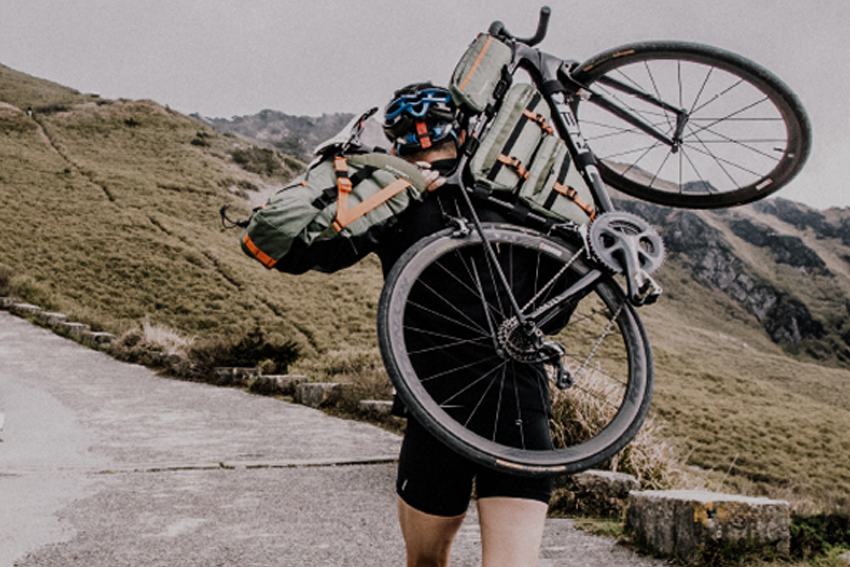Going touring on a cycle requires you to carry your luggage on your bike. You could, of course, have a vehicle trailing with your luggage. But that wouldn’t quite provide you with the freedom that cycle touring gives.
Today if you go online or to a cycle shop to buy bags for your bike, you will have two broad genres to choose from, traditional rack and pannier or modern bikepacking. So what’s your choice? Here’s a quick comparison for you to make your choice!
Weight and Volume
The bags themselves weigh more or less the same, but once you factor in the weight of the racks required for panniers, then bikepacking wins! This victory comes with the cost of volume, there is noticeably less amount of space for your luggage with a bikepacking setup. Which is both good and bad, good because you only carry the essentials, bad because there are many things you ‘want’, but are forced to forego.
Ease of Packing
It is much easier to pack and organise panniers. Bikepacking bags require a bit more mental experience! Even fixing and removing panniers is substantially faster. It takes about 20 seconds to remove panniers off the racks, while the other requires considerably more time, and also a number of straps attached!
Ease of Cycling
The bikepacking bags shine in this area. There are no racks, therefore no bolts to loosen on bad roads. The centered weight of the frame bag aids handling dramatically. The overall lighter setup makes it easier to climb and ride rough trails confidently. The bags are in-line with the bike and as such are more aerodynamic. On terrain where riding is impossible, it is much easier to push your bike, panniers tend to keep hitting your legs while walking your bike. There is also no clatter-bang sounds which panniers tend to make on bad roads!
Freedom
A bikepacking setup allows you to venture down trails you would otherwise think twice about on a pannier equipped cycle. This gives the rider a lot of flexibility when choosing an adventurous route.
Cost
The cost of good quality bags of either type from a reputed manufacturer is approximately the same. The additional cost on a pannier setup is for the racks. A bikepacking setup requires ultralight gear to really work well, and if there is one thing which the cycle market teaches you, Light + Strong is not Cheap! Tents, sleeping bags, mats, stoves etc. cost a pretty penny as you try to shed kilos and then grams.
Bicycle
A pannier setup requires a dedicated touring cycle or at the very least a bike with the capability of carrying loads and eyelets for racks. Bikepacking isn’t restricted by the type of bike you already own. You can practically strap your bags on to any bike capable for the terrain and head out. Even on carbon!
Choose What?
Maybe this article has added more questions than answers to your imminent decision! Traditional Bicycle Touring and Bikepacking both have their advantages and disadvantages as stated above, the question is what is right for you? If you already have invested in one, it would be prudent to stick to that for the interim. If you are hellbent on switching over or planning to start from scratch, then answering these questions might help you arrive at a decision.
What bike are you planning to tour on? Will your tours be mostly on roads or trails? Are you a minimalist or prefer to be more lavish? The average duration of your tours? Are you planning to carry a lot of photography equipment and a laptop?
Answering these few questions will help you choose the correct bags for your cycle tour!

